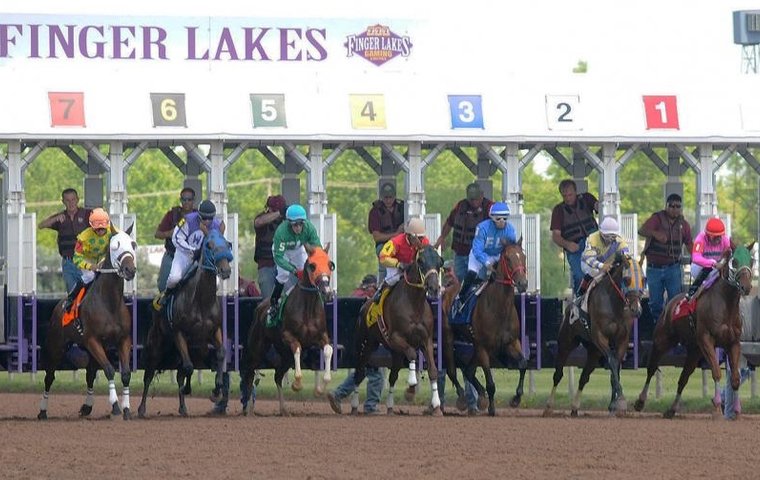
Uncle Sam has been a well-known, constant presence at American racetracks in requiring immediate taxation on certain big betting scores. But who would have guessed that Uncle Sam also has been a winning Thoroughbred owner?
2019 marks the 30th anniversary of a case involving the Federal Bureau of Investigation that centered on Finger Lakes racetrack in upstate New York, where the FBI actually campaigned an ‘undercover’ racehorse during much of 1989.
The horse, a 4-year-old filly named Zachregard, did not exactly blend in: she won her first two races after being acquired privately by the bureau in Ohio in April 1989 and shipped to Finger Lakes to race at the $3,000 claiming level. Between May and November, Zachregard raced 15 times for an owner listed as ‘M Grace’, posting three wins and five placings and earning just shy of $9,000.
‘M Grace’ was the alias for an undercover agent whose real name was Mike Glass, according to Dale Anderson, who supervised the FBI’s Rochester agency in that period. Now long retired and with sharp recall of what he considered to be a unique case, Anderson shared details about the operation for the first time publicly.
“We had a source in Syracuse that told us that there were some shenanigans going on at Finger Lakes, maybe some doping of some of the horses or jockeys holding horses back,” Anderson said. “We brought in Mike Glass to start hanging around Finger Lakes. He had done a lot of undercover work and he knew a lot about gambling.
“After about two or three weeks, he told us, ‘I think I know the right guys, and they like me, okay, but I am kind of on the outside of their group. We talk trash and hang around the bar together and stuff, but the problem is that I need to have a reason to be there.’ That made sense, and there was an agent in Louisville who had a source to buy this horse for around $3,000.
“Mike Glass told these guys at the track that he won the horse in a poker game in Las Vegas or somewhere. After that, it worked better because Mike had a reason to be hanging around. He was part of the ‘in crowd’. What surprised us is that the horse ended up being competitive. She won some races and was usually getting a check if she didn’t win, so we made a little money between racing her and then selling her at the end of the year.”
Robert Fieldhouse trained Zachregard for Grace/Glass but had no knowledge of the horse’s real reason for being there, Anderson said.
Lack of evidence
The investigation did lead to indictments against two other trainers and a jockey that federal prosecutors based on the performance of a horse named Shine Please, alleging that the 2-year-old colt was held in its debut race at Finger Lakes in September 1989. A federal judge threw out the charges at trial in July 1990, citing a lack of evidence.
Around the same time, the Boston Herald ran a report on the undercover operation and the participation of an FBI-owned horse, which was picked up in newspapers around the country, although the bureau would not confirm details at the time, other than referring to the probe “as the first successful use of a horse in an undercover racetrack operation by the FBI”.
Today, Anderson says he and his agents concluded there was no widespread conspiracy to fix races at Finger Lakes.
“There was no great amount of chicanery,” he said. “It was a pretty straight-up deal. It was also true that occasionally there would be someone doping a horse or something like that, just like any other track probably, but it wasn’t any great ... conspiracy.”
Anderson worked for the FBI in various places, including the national headquarters in Virginia, over a 26-year career but said this was the only case he came across that utilized a racehorse.
“After it was finished, a good friend of mine who I worked with at headquarters was in the FBI director’s office and the director [William Sessions] wanted to know a little more about the case, so we got a photo of Zachregard and sent it to him, since it was the FBI’s horse,” Anderson said.
“Looking back, the whole thing is kind of amusing. Sports Illustrated even ran a short article about it. They had a cute little cartoon drawing of a horse standing on its hind legs, wearing a trench coat, with an FBI badge on it.”


